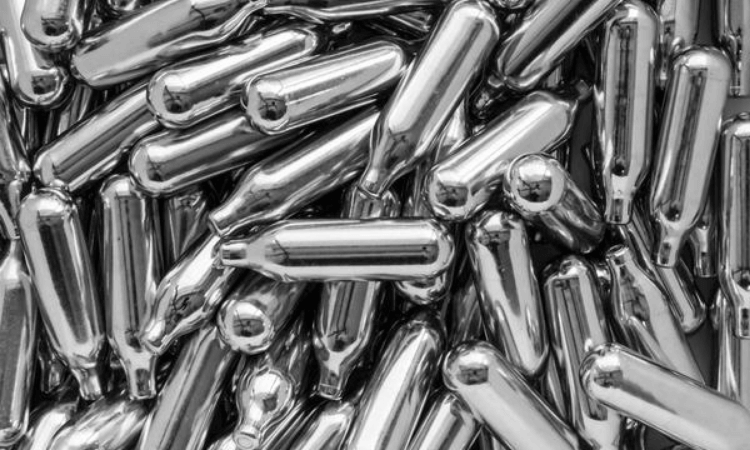
Nitrous oxide, also known as Laughing Gas or Whip-its, is a colorless, odorless gas which works as an inhalant. It has been provided in clinical settings for over a century to relax patients for procedures. Reusable whipped cream canisters, like the ones for professional chef use, use Nitrous Oxide as a propellant. This is how it is more commonly acquired for recreational use.
Clinical Use
In a clinical setting, Nitrous Oxide is often combined with oxygen and administered through a mask. The oxygen is helpful because high doses without additional oxygen can cause hypoxia (oxygen deficiency). If there is not oxygen alongside the nitrous, often the doctor will give the patient oxygen for several minutes after the Nitrous is discontinued. This helps clear any remaining gas from the body.
In this way, the substance is very safe. It can relieve pain and act as a mild sedative, making it particularly useful in minor dental procedures where patients are fearful or would be uncomfortable. It is also often provided during childbirth as a mild pain reliever and relaxant. However, the effects wear off very quickly.
Effects of Nitrous Oxide
When inhaled, Nitrous Oxide creates a high that lasts around 20 seconds causing feelings of euphoria and relaxation. Users may also experience laughing fits, hence the name Laughing Gas.
It can also cause strong hallucinations in larger amounts. Steve-O, of Jackass fame and now 11 years sober, says Nitrous Oxide is one of the most frequent and darkest drugs he ever did. His hallucinations were so strong that he was constantly chasing that feeling again, ingesting larger and larger amounts with dangerous implications.
Other effects of the drug include dizziness and difficulty thinking straight, impairments which can become dangerous. In Australia, an 18 year-old boy fell from a balcony and died after using Nitrous Oxide. Friends say he likely fell due to the dizzying effects of the drug.
While overdoses are rare, they have been reported in both the UK and US. As previously mentioned, when the substance is used in large amounts without added oxygen, it can cause hypoxia, low blood pressure, and fainting.
Side Effects of Nitrous Oxide
Short-term side effects can include:
- Shivering
- Nausea
- Dizziness
- Fatigue
- Hallucinations
- Sound distortion
- Excessive sweating
- Vomiting
There are also reports of allergic reactions to the drug. Signs to look out for are fever, wheezing, difficulty breathing, chills, and hives. These symptoms require immediate medical attention.
Long-term effects typically only occur from long-term abuse. Because Nitrous Oxide blocks B-12 uptake, those who use the gas regularly may develop deficiency which can lead to Anemia, nerve damage, and neurological complications.
Getting Help
Nitrous Oxide is one of many substances people take to escape their reality or as a party drug. But what happens when things get out of control? If you or a loved one are struggling with any type of substance abuse or addiction, we can help.
Call us today, we’re here to talk and we’re here to listen.